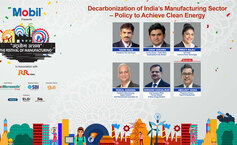
US-based UM International, LLC & Lohia Auto joined hands in September 2014 to form UM Lohia Two-Wheelers Pvt. Ltd. How's been the journey so far and are you satisfied in terms of achieving the goals that were set for the organization at the beginning?
Yes, we created our joint venture with Lohia Auto Industries four years ago, which enabled us to use their plant for our product assembly. The last four years have been challenging for us as the market is quite dynamic. We currently have 80 percent localization and import 20 percent of the components from our factories and vendors abroad. This strategy helped us be more cost effective than other foreign origin auto brands in the country, the benefit of which is eventually passed on to the consumers.
In terms of market segment as well, we're catering to one of the most competitive segment in the auto industry, which needs us to be at the top of our game all times. While this gives us a niche, it also creates an opportunity for us to perform and outdo the targets we set for ourselves. So yes, it would be fair to say that we have achieved some goals, while the others are yet to be achieved, which we hope at a steady pace we will eventually
Why did UM join hands with Lohia Auto? Tell us about this collaboration and how do you plan to leverage on this?
If we were to enter the Indian market on our own, it would have pushed our present timeline back by 2-3 years. Setting up your company in a new country is a herculean task which involves setting up a manufacturing plant, conducting research, and a lot more before finally starting production. Entering the Indian market with an already established partner helped us to expedite our activities.
Being an innovation driven company, it was of paramount importance to us that our Indian branch teamed up with a firm that understood the local market and more importantly, structured their brand around innovation too. In Lohia Auto we found the perfect confidante as not only was their prerequisite knowledge of our market strong, but also, we found that innovation was at the very crux of their company.
As far as the market scenario is concerned, what are the things that you see working in the favour of the UM brand in India?
After extensive market study, UM learnt that the middle-class motorcycle enthusiasts on the lookout for reasonably priced cruisers don't really have a choice other than Royal Enfield. American cruisers like Harley-Davidson and Indian Motorcycles as well as the British Triumph cruisers are expensive. We believe the scope for growth in this segment is monumental, and well within our reach. At UM, the idea is not to compete with anyone else, but rather, create machines with exemplary quality, performance, and experience that would speak for themselves. We offer our customers many innovative and first-in-India features, enabling them to truly ‘Ride the Difference'.
I understand UM is manufacturing at Lohia Auto's Kashipur facility in Uttarakhand. What is the capacity at present?
The current annual capacity of our Kashipur plant in Uttarakhand is 50,000 units annually; although we haven't hit maximum production yet. As we plan to increase our portfolio, we shall hit be able to exploit it to full potential.
Do you plan to expand the manufacturing footprint in other parts of India? When will that happen?
We are planning to invest US$ 25 million to set up an engine manufacturing facility in Hyderabad to grow our production base. The new engine manufacturing facility will commence by 2019 with an annual capacity of 50,000 units.
How strong are your R&D activities in India?
In 2013, the first thing we did was to establish a wholly owned subsidiary and hire a team of engineers to initiate the R&D process here. In recent months our US board has authorized an extra investment in this company because we see the potential of Indian talent. We have our headquarters in the United States, with R&D centres based there and out of Thailand and China as well. The man power that you get in India is very versatile, with an extremely optimistic outlook. We're very keen on making the Indian R&D centre advanced to be able to compliment the other centres as well. We currently have 30 people in the India R&D centre.
(Continued on the next page)



























